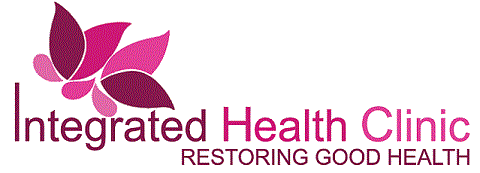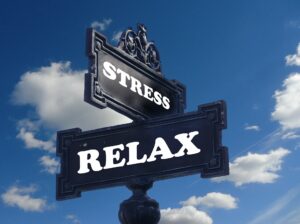Stress and Anxiety is a very common presentation, ranging from everyday life stress of crossing the road safely, or more serious worries like a life threatening illness, divorce or loss of a loved one. However for some even in the absence of notable stressful event there is still anxiety. There is no logical reason for the anxiety but every little event weighs them down physically and emotionally. Social events are an uphill struggle and going to work is equally challenging.
No matter the cause of the stress, instinctively the body reacts by initiating a “stress response” and your body is flooded with stress hormones. Your muscles tenses up, there is rapid breathing, and adrenaline increases your heart rate and elevates your blood pressure. Cortisol increases blood sugar (glucose) levels and increases its availability to the brain.
Challenging situations are part of daily life, and so there is a need to have the necessary capacity and ability to manage stress. Therefore developing more positive, healthier ways to respond to stress becomes paramount.
Invoking a “relaxation response” is a good way to counter act stress. There are many different ways of doing this, and you will need to find the one technique (or a few) that work best for you. Initially, it will feel strange, but with regular practice you will gain confidence and create a source of relaxation and calm that is free to use and available day or night. Practicing relaxation has many benefits including;
- Slows down breathing rate
- Lowering heart rate and blood pressure
- Improves digestion, maintains normal blood sugar levels
- Reduces production of stress hormones
- Reduces muscle tension and improves blood flow to the muscles
- Enhances confidence and calm, reduces anger and frustration,
- Improves sleep and energy levels
Here are five relaxation techniques that help initiate a relaxation response.
1. Conscious breathing. Breathing is a simple but very powerful tool. Research has confirmed a link between breathing to relaxation. Specialised brain cells constantly monitor our breathing sending signals to other parts of the brain. It can differentiate between sighing, yawning, gasping, sleeping, laughing and crying.
The 4-7-8 Breath technique is the perfect antidote to stress that can bring on relaxation in a very short period of time. It does not require any equipment and can be done anywhere and in any position, but start practicing by sitting with your back straight. This technique may not be suitable for people with breathing problems.
During the exercise the tip of your tongue should lie and just touch the upper front teeth. Then, before starting exhale completely through your mouth.
- Inhale quietly through your nose (closed mouth) to a mental count of four.
- Pause and hold your breath for a count of seven.
- Exhale completely through your mouth, making a whoosh sound to a count of eight. This is one breath.
Now repeat the cycle three more times for a total of four breaths. The time spent on each breath cycle is not important, but the ratios of 4:7:8 is key to good practice. With practice the breaths can be slowed down with deeper inhalation and exhalation breaths.
2. Body scan. Together with the breathing technique you start to become aware of your physical body. Starting from the top of your head you start to ‘feel’ each part of our body, becoming more aware of it thus enhancing your mind-body connection. Gradually you work all the way down the body. Becoming aware of the body helps to release muscle tension and enable relaxation. This technique may not be suitable for people who have difficulties with their own body image.
3. Visualization. In this relaxation technique, you close your eyes sitting or lying down in a quite spot and create mental images of calming or peaceful places or experiences to focus on and take a visual journey there. You can be in the forest or at the seaside, imagining the sounds, touch and smell e.g. feeling the warmth of the sun or smelling the fresh countryside air.
4. Mindfulness meditation. Mindfulness meditation can help with anxiety, depression and pain control. It focuses on being in the present moment reminding us of its importance, rather than dwelling on past or future concerns. You will need to find a quite space, sitting comfortably focus on your breathing whilst concentrating in the ‘here and now’.
5. Prayer. If you are religious or spiritual repeating a silent short prayer or phrase along with focused breathing will help relaxation and calm.
Other relaxation techniques include; tai chi, qigong, yoga, music and art therapy, walking, biofeedback and sports. There are a number of home remedies you can also try. For additional help complementary therapies like; massage, acupuncture, and reiki may be helpful.
Learning relaxation techniques takes practice, but is an extremely useful skill. Be patient, practice daily for 10-15 min. If you are really short on time than even 5 (full) minutes every day will make a difference. Try different ones. Start with the breathing technique and once you are comfortable with it then expand into the other techniques.

